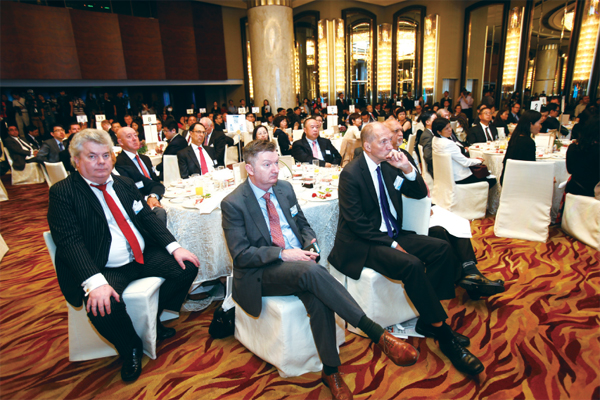2015-11-06
ALFRED ROMANN

“Hong Kong’s role as a ‘super connector’ can help bring China and the world closer together,” said YK Pang, chairman of the Hong Kong General Chamber of Commerce, speaking at the China Daily Asia Leadership Roundtable in Hong Kong on Oct 29. Hong Kong is the premier offshore yuan clearing hub and asset management center in Asia, with $377 billion in Chinese outward investment stock, making it a key channel. Leung Chun-ying, Hong Kong’s chief executive, said: “Our success has been powered by the twin engines of China and the world: By our ‘one country, two systems’ arrangement and the deepening economic integration it has won us, and by our strong connections with the rest of the world. “In both cases, by the super-connector role we play for them,” he added. Hong Kong’s economy is regularly recognized as the freest in the world, boasting businesses and organizations with global networks, which suits the goals of the Belt and Road Initiative, a development strategy proposed by President Xi Jinping in 2013. The initiative revolves around the Silk Road Economic Belt, which will link China with Europe via Central and West Asia, and the 21st Century Maritime Silk Road, which runs from southern China to Southeast Asia, South Asia, Africa and Europe. “If we leverage our social capital, we will be the best placed Chinese city to contribute to the Belt and Road Initiative, certainly in people-to-people bonds,” Leung said. “We can turn Hong Kong into a platform of facilitating understanding.” Hong Kong participates in both the Asia-Pacific Economic Cooperation and the World Trade Organization as an individual member economy. “More than a city of China, Hong Kong maintains a reputable standing … in the international arena, and that sets us apart from other cities in the mainland and overseas,” said Leung. “And that is how we can unleash the tremendous potential of the Belt and Road.” Chow Chung-kong, chairman of Hong Kong Exchanges and Clearing, said: “Hong Kong is the most efficient financial center in the region. “Hong Kong is well situated to play a role — either from the simple bank loans or syndicate loans from Hong Kong-based banks to bond issuance, either in international currency or yuan, to equity raising, which Hong Kong has been very good at for many years.”Although the special administrative region is not part of the biggest economic or political clusters in the Asian region — such as the Association of Southeast Asian Nations or the Shanghai Cooperation Organisation — being part of China gives the city backing and strength. “One role that Hong Kong has always played is really as a global supply chain manager orchestrating a lot of flows,” said Victor Fung Kwok-king, chairman of the Fung Group, a multinational company headquartered in the city. Three decades ago, much of the world’s consumption was in the West, with goods made in the East. That flow is now changing. “There is going to be a rise of the new middle class in the developing economies and global consumption will shift … in terms of proportion to the developing countries,” said Fung. “And in those developing countries we are going to get a new consumer class … for the world.” The challenge for Hong Kong will be to tap into new markets and orchestrate the supply chains as it acts as a so-called super connector for this new consumer class. Organizations such as the Hong Kong Trade Development Council (HKTDC) have been working to find their niche as super connectors for the Belt and Road. “We should become the hub for the Belt and Road. The first thing to start is how to provide the information,” said Vincent Lo Hong-sui, chairman of the HKTDC, which is planning to launch an information website for the initiative. Hong Kong’s pool of knowledge puts it in an ideal position to provide super connectivity within and among countries participating in the Belt and Road strategy, said Lincoln Leong Kwok-kuen, CEO of the MTR Corporation, which manages the city’s transport infrastructure. “To me it is the connectivity, the super connection and the business model that are so critical,” said Leong. Connectivity is a key theme behind Hong Kong’s development. The city’s airport, for example, has more than 1,000 flights daily linking the city with the rest of the region and much of the world. About 80 percent of the people living along the Belt and Road are within a five-hour flight from Hong Kong. “Beijing doesn’t have that proximity to people within the Maritime Silk Road, and neither does Shanghai,” said Pang of the chamber of commerce. “But we in Hong Kong have that proximity. And we cannot underestimate the ability to connect so quickly with all these people.” He added that as investment goes into these countries, there will be “trickle-down” benefits into their economies. “Hong Kong SMEs (small and medium-sized enterprises) will be able to tap into the construction money that becomes available in these countries as the trickle-down from construction from the government reaches the pockets of the people of those countries.” Source: http://www.chinadailyasia.com/2015-11/06/content_15340923.html